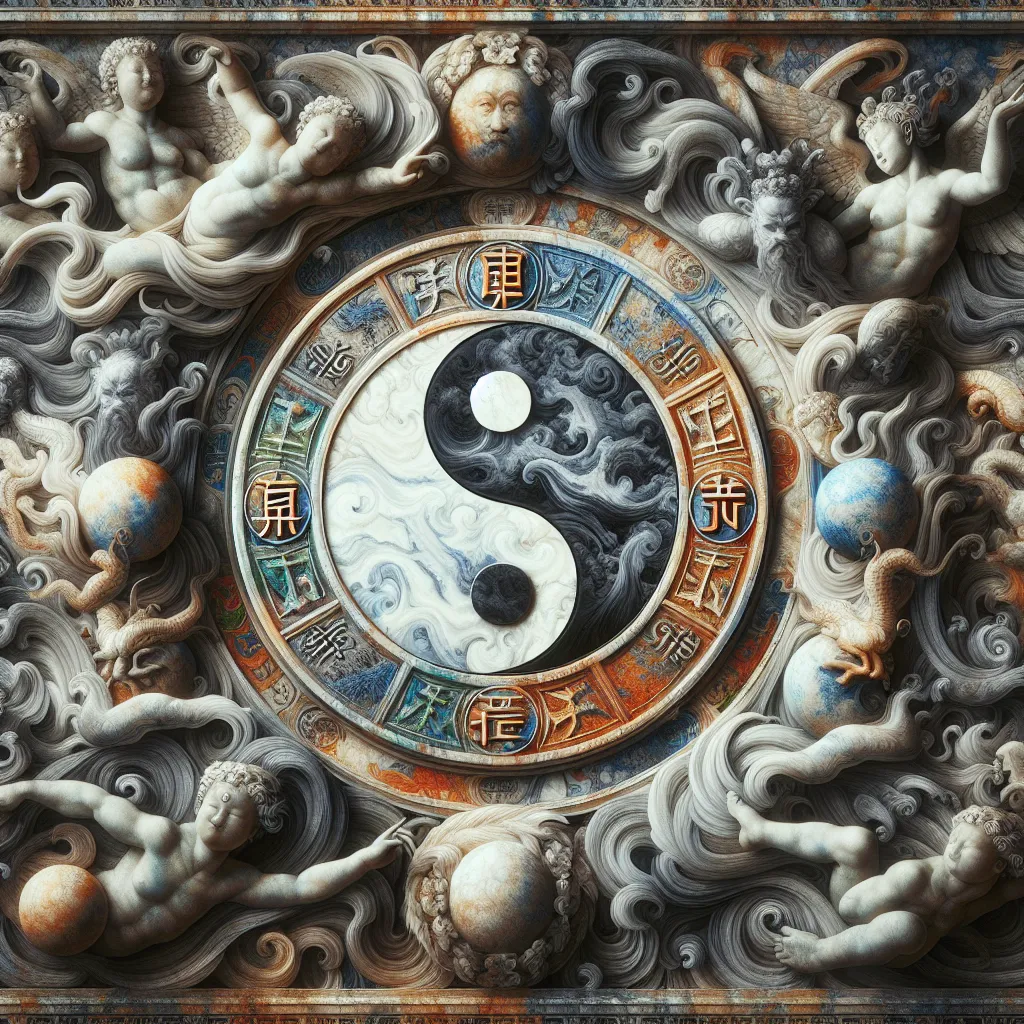
- Published on
- Authors

- Name
- You
Taoist Symbolism: Decoding the Mystical Language
Taoism, an ancient Chinese philosophical and spiritual tradition, is steeped in a rich tapestry of symbolism and metaphors used to convey profound spiritual truths. The symbolism in Taoist teachings acts as a bridge between the material and the immaterial, the known and the unknown, the mundane and the divine. This article delves into some of the most emblematic symbols, their meanings, and how they convey complex spiritual concepts.
The Yin-Yang: Harmony in Duality
The Yin-Yang symbol, perhaps the most recognized emblem of Taoism, represents the interdependent nature of opposites.
Key Aspects of the Yin-Yang:
| Aspect | Yin | Yang |
|---|---|---|
| Nature | Passive, Feminine | Active, Masculine |
| Color | Black | White |
| Element | Water, Earth | Fire, Air |
Interpretation:
- Balance: Yin-Yang symbolizes the balance of opposing forces. Neither can exist without the other.
- Interdependence: Each contains the seed of the other, symbolized by the dots within the swirls, signifying that within yin, there is yang and vice versa.
The Wuji: The Primordial Universe
Before Yin-Yang, there was Wuji, the undifferentiated absolute, often represented as an empty circle. It symbolizes the state of potentiality and infinite possibility.
Symbolism:
- Emptiness and Fulfillment: Emptiness is not nothingness but a state ripe with potential. It symbolizes the formless source of all forms.
- Non-Duality: Wuji transcends dualistic distinctions, embodying the ultimate oneness.
The Trigrams: The Building Blocks of Reality
The eight trigrams (Ba Gua) are fundamental symbols in Taoist cosmology, used in divination and feng shui. Each trigram comprises three lines, either broken (yin) or unbroken (yang).
The Eight Trigrams and Associated Elements:
| Trigram | Chinese Name | Element | Represents |
|---|---|---|---|
| ☰ | Qián | Heaven | Creativity, Strength |
| ☷ | Kūn | Earth | Receptivity, Devotion |
| ☵ | Kǎn | Water | Danger, Depth |
| ☲ | Lí | Fire | Clarity, Passion |
| ☳ | Zhèn | Thunder | Movement, Initiation |
| ☴ | Xùn | Wind | Penetration, Flexibility |
| ☶ | Gèn | Mountain | Stillness, Inertia |
| ☱ | Duì | Lake | Joy, Satisfaction |
Interpretation and Usage:
- Dynamic Interactions: The trigrams symbolize different states and natural processes. They are used in the I Ching to understand changes and transformations in nature.
- Harmonizing Spaces: In feng shui, these trigrams are applied to ensure harmony and balance in living spaces, each representing directions and energies.
The Three Treasures: Life, Essence, and Spirit
In Taoist alchemy, the "Three Treasures" or Sanbao refer to Jing (Essence), Qi (Life Force), and Shen (Spirit).
Understanding the Three Treasures:
| Treasure | Description | Symbolism |
|---|---|---|
| Jing | Physical essence, foundation of vitality | Fertility, Longevity |
| Qi | Vital life force, energy flow | Health, Vitality |
| Shen | Spirit, consciousness, mind | Enlightenment, Divinity |
Practices:
- Cultivation: Taoist practices aim to cultivate and balance these three treasures through techniques like Qigong, Tai Chi, meditation, and herbal medicine.
- Transformation: The transformation of Jing into Qi and Qi into Shen embodies the path towards spiritual immortality and alignment with the Tao.
Conclusion
Taoist symbolism is a profound language that encapsulates complex spiritual and philosophical truths. Whether through the balance of the Yin-Yang, the potential of Wuji, the transformative trigrams, or the nurturing of the Three Treasures, these symbols offer timeless wisdom. They guide us in understanding the harmony of the universe and our place within it, bridging the ancient with the modern, the mystical with the practical.
Engage with these symbols not merely as relics of an ancient past but as vibrant, living guides that resonate with the universal quest for harmony and enlightenment.
